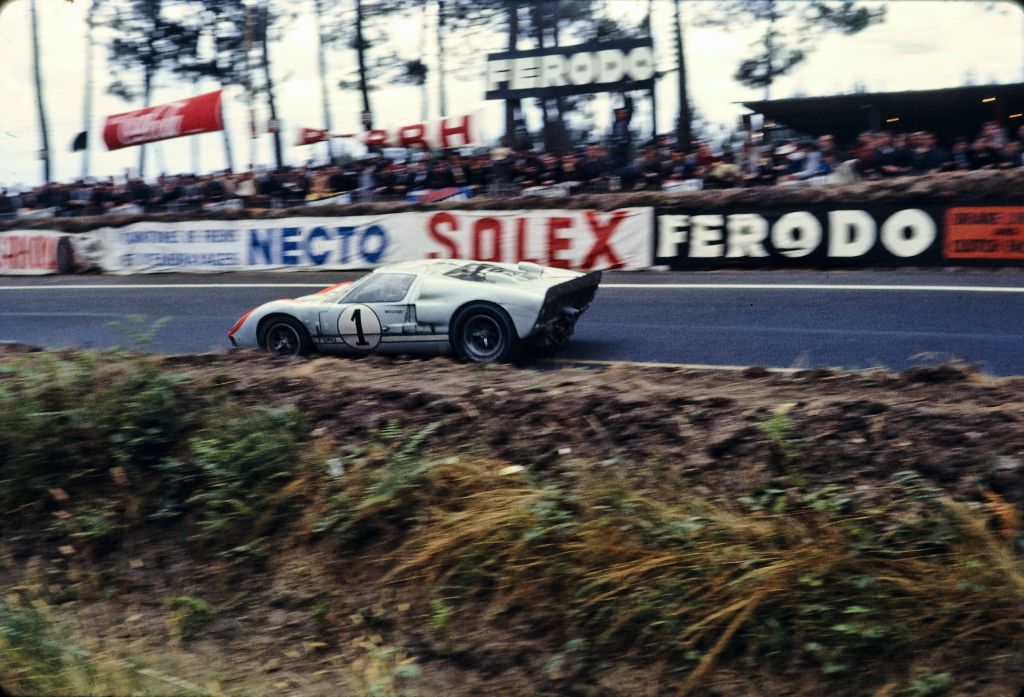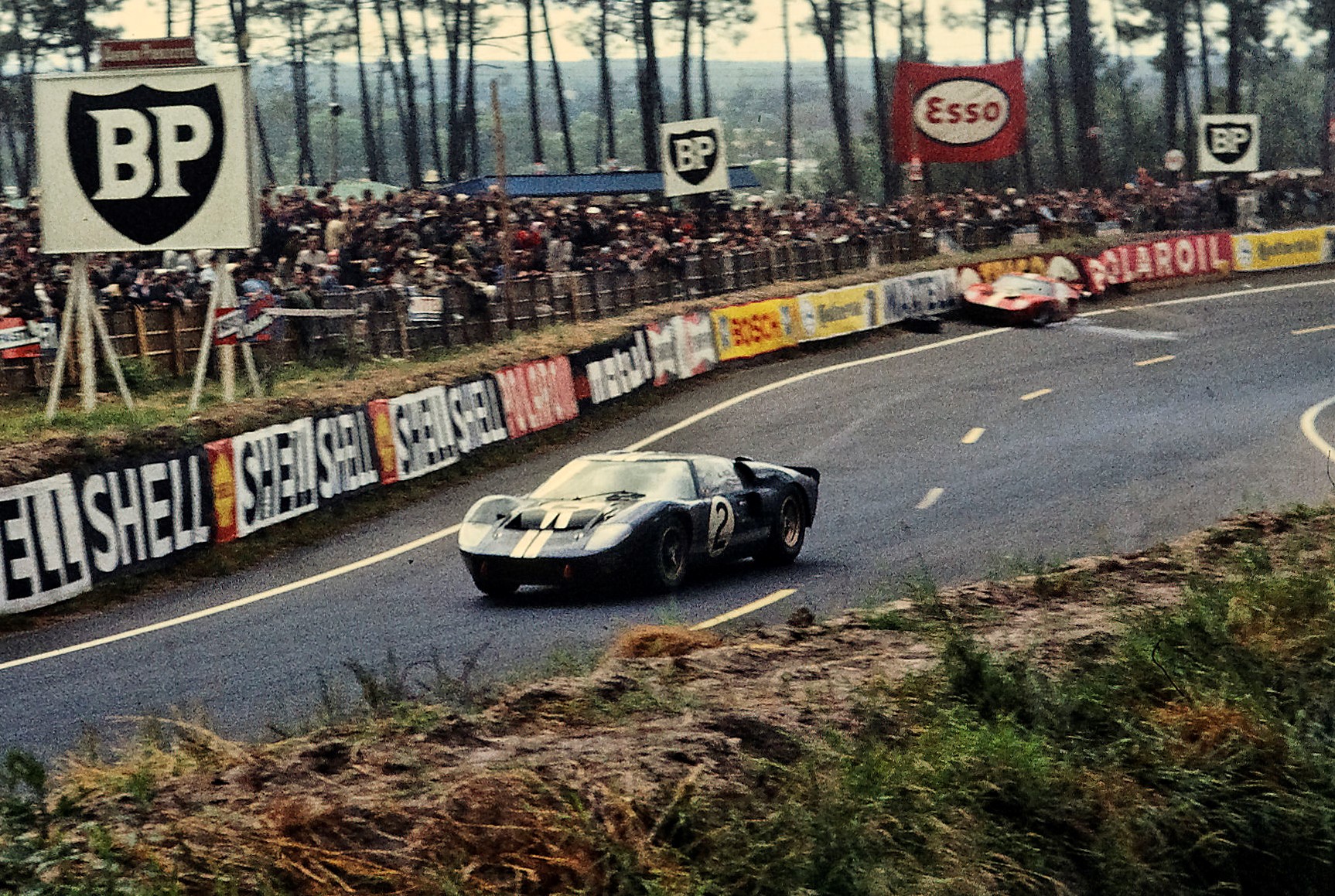The 24 Hours of Le Mans 1966 is such a legendary race that a Hollywood film about the fierce competition between rivals Ford and Ferrari is being released later this year. But so much about what makes this race legendary isn’t just what happened during the 24 hours itself, so much as the months and years leading up to it.
For Ford, active involvement in racing had been limited by Henry Ford II’s position in the Automobile Manufacturers Association and the focus on safety that it championed, with Ford finally entering the racing world after seeing its competitors’ success in racing fuel their sales on the road. Meanwhile, for Ferrari, the years preceding 1966 had been hugely successful, but somewhat bloody, with Enzo Ferrari having been cleared of manslaughter for the deaths of aristocrat racing driver Alfonso de Portago, his co-driver Edmund Nelson, and nine spectators in a horrific 1957 crash.
In 1963, Enzo Ferrari had put his company on the market, entering talks with Ford. Ferrari wanted to protect his racing team, which he intended to continue running, while handing the majority of the road car business to Ford. However, the contract proposed by Ford outlined that Ford would have control of the budget for racing and the deal was called off, with both parties determined to beat each other on track.
Ford unveiled their first Le Mans challenger, the GT40, in April 1964. By all accounts, it looked good, and Ford boasted of its power, but in reality there was little idea how it would perform on track. Ultimately, it failed to live up to expectations, and Ford suffered a humiliating introduction to Le Mans in 1964, while Ferrari celebrated their fifth successive victory.
For 1965, Henry Ford II sought the involvement of Carroll Shelby, who had enjoyed some success with his own 1964 entry which had finished top of the GT class and placed 4th overall. With Shelby’s involvement, 1965 finally saw speeds Ford could be happy with, but in the race their cars were dogged with unreliability and failed to go the distance. The winning car, yet again, was a Ferrari, run by Ferrari North American Racing. The result was a further bitter and ironic blow to Ford, who had hoped to be the first American team to claim victory at the prestigious event.
And so came 1966. Ford had finally been able to balance speed and durability stateside, with Ken Miles and Lloyd Ruby winning the first ever 24 Hours of Daytona. For the 24 Hours of Le Mans, Ford fielded three cars built by Shelby, as well as five cars built by other manufacturers. The plan for the race was clear, however: they would work together to secure a win, with drivers following clear orders and being instructed to stick to pre-agreed lap times, with Gurney having the fastest target, to avoid intra-marque battling. All teams would run Goodyear tyres, with the exception of the #2 car, whose driver Bruce McLaren had a contract with Firestone.
Ferrari had a total of seven cars, including two factory cars. Following months of rehabilitation after a crash, John Surtees was ready for the race at the helm of the Ferrari 330 P3, and came prepared with a plan to help take Ferrari to victory once again, despite the growing might of the Fords. Surtees was confident in the Ferraris’ reliability, and so he suggested attack the Fords heavily early on, forcing them into responding and causing them to fall foul of unreliability problems. However, Surtees would not get the chance to put his plan into action.
Surtees’ position at Ferrari had been on shaky ground for some time. The team’s manager, Eugenio Dragoni, had convinced Ferrari to oust him, only for Surtees to win the Belgian Grand Prix, causing that idea to be abandoned, or, at the very least, postponed. Now, however, Dragoni had suggested that Surtees take somewhat of a back seat at Le Mans, suggesting instead that Ludovico Scarfiotti start the race in his place with Surtees’ driving duties reduced, apparently because of concerns over his health. Surtees was adamant that the suggestion had nothing to do with his health, and refused to race, with Scarfiotti and Mike Parkes sharing the car without him.
Enzo Ferrari himself had all but admitted defeat before the race had even begun, viewing a Ford victory as an inevitable consequence of their practically uncapped budget. Qualifying soon confirmed his fears: Dan Gurney’s #3 Ford set the fastest lap, with Ken Miles’ #1 car in second. The top-placed Ferrari was fifth.
On race day, Gurney set the initial pace in the #3, as Ford had planned. The #1 car, piloted by Miles, was forced to pit as soon as the race had started due to door damage. The setback meant that the pre-agreed lap times went out of the window and Miles fought back to third place, with Fords running in first, second and third at the 1 hour mark.
Without Surtees and his plan, the Ferraris stuck to a fairly conservative pace, but remained close behind the leading pack of Fords, waiting to take advantage of any problems they might face. As the cars started to come in to the pits for their first scheduled visits, it became clear that while the Goodyear tyres were holding up well, the Firestones were struggling with heavy graining. Bruce McLaren, despite being contracted to Firestone, made the call to switch to Goodyear tyres as well, knowing that there would be little chance of victory otherwise.

After the first round of driver changes, Denny Hulme had taken over for Miles and the #1 car now sat in the lead. By 10pm, however, the Fords endured long pit stops, allowing the Ferraris to leapfrog into the top two positions. This was to be short-lived, however.
Rain hit overnight, and the Fords set staggering lap times and charged ahead. The Ferraris, meanwhile, were not so lucky, with Jean Guichet spinning in his factory Ferrari. Scarfiotti, in the other factory car, suffered an accident, ploughing into the wreckage of an earlier incident. He escaped relatively unscathed, but his race was over. Before morning came, Ferrari suffered more bad luck, with their non-factory entries running into mechanical problems, and one-by-one, retiring from the race. Ferrari had now given up the fight, but would Ford go on to win?
Gurney and Miles had been trading lap times throughout the early hours of the morning, ignoring any ideas of pre-agreed lap times. At around 9am, disaster struck. Gurney was forced to retire the #3 car with a radiator leak. Had the Fords been pushing each other too hard?
However, the other Fords managed to go on without problems. With the clock ticking, and with Ford running in the top three positions several laps ahead of any other competitors, the race was all but won, but the controversy was far from over. The team instructed Miles and McLaren to cross the line side-by-side, with the third placed car behind them in formation, to create a tie for first place.
However, what looked like a dead heat resulted in McLaren and Amon in the #2 car being declared the victors on the basis that they had started further back in the field, and therefore had travelled further over the course of the race. Ken Miles and Denny Hulme would be second, and Miles especially was far from happy. Debate would rage for years about whether Ford knew what the result would be, and if they should allowed a race to the finish. But Ford had won the war with Ferrari, and they would go on to take victory at Le Mans for the next three years.

Leave a Reply